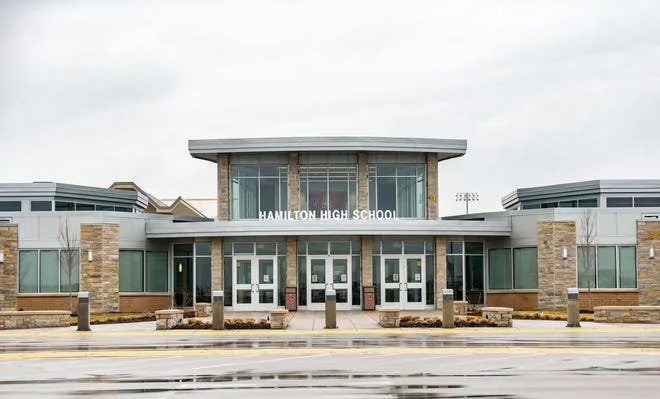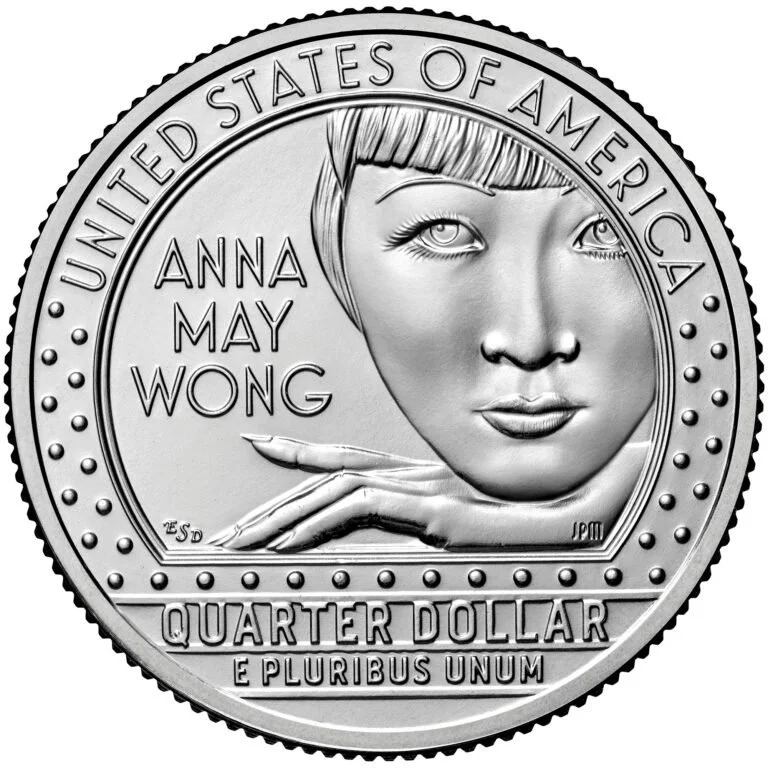Not Your Model Minority
Photo is a decpiction of race, sourced from NPR.
Jasleen Kaur
In the wake of the September 11 terrorist attacks in 2001, Balbir Singh Sodhi, a follower of the Sikh faith, donated all loose cash in his wallet to the victims of the attacks before heading to work at his gas station in Mesa, Arizona on September 15 that same year. Sodhi wore a turban and kept his beard as a part of his religion and became the victim of the first hate crime after 9/11. He was shot and murdered while planting a garden outside his gas station that same day by a man who “was seeking retaliation for 9/11.” His killer also went on to shoot at people of Middle Eastern descent that day before being arrested.
On April 6, 2020, an Asian woman was taking her garbage outside her home in Brooklyn, New York when she was attacked by a man who poured acid on her head. The woman suffered from severe second-degree burns as a result of this hate crime due to heightened xenophobia encouraged by reactions to the COVID-19 pandemic.
Both of these hate crimes against Asian Americans were brushed over when they occurred due to a perpetuated view that Asian Americans are the “model minority” that live perfect lives. The model minority stereotype (often referred to as the model minority myth) is the view that Asian Americans are the successful, rich, naturally intelligent, hard-working, and a submissive minority group that has overcome all obstacles, including racism, without complaining and without assistance. As seen in the cases of Balbir Singh Sodhi and the woman who faced an acid attack, these occurrences come as a result of excused racism, fueled by this myth, towards the Asian community.
The truth is that Asian Americans face racism daily whether it be through hate crimes, stereotypes, or microaggressions and the model minority stereotype has served as a scapegoat for these blatantly racist acts. The myth has an overall negative effect on the Asian community as it invalidates racism, disregards mental health, and creates rifts in Asian and Black American relations.
Invalidation of Asian American Racism
The model minority stereotype that focuses on the elite of the Asian community to describe the whole has negative effects in many ways. This stereotype has allowed Americans to overlook all hardships faced by Asian Americans. Asian Americans themselves are diverse in culture and appearance and face a plethora of different hardships every day. However, they have been grouped into this singular stereotype which characterizes them as already having dealt with all racism and discrimination. This is a stereotype and myth that says that Asian Americans are always successful because they don’t complain about “minor” inconveniences.
However, Asian adversity is far from nonexistent as the stereotype implies. In New York City alone, the NYPD reported a 361% increase in Asian American hate crimes in 2021. The model minority myth downplays these incidents because it goes against the narrative that Asian Americans have already overcome all forms of racism. The stereotype labels Asian Americans as docile and submissive. They are taught to keep their heads down and stay quiet because any racism they face is “nice racism.”
Post 9/11 hate crimes against South Asians and East Asian hate crimes due to COVID-19 are often ignored because they are seen as “rare” incidents that the community has overcome, even though this is not the case. The idea of a nicer form of racism not only invalidates all racist acts committed against Asians but also insinuates an idea within the Asian American community that the difficulties they face don’t matter enough to be talked about because their community is always successful. When these ideas are internalized it causes the community itself to see racist acts against them as acceptable when this is far from true.
Photo depiction of common misconceptions/stereotypes about Asian Americans. Photo from Pacific Asian Museum.
Effects on Asian American Mental Health
Asian American mental health is often ignored because of cultural expectations credited to the model minority stereotype that has manifested itself within the western world. Asian Americans have been labeled as always being successful, rich, and intelligent solely because of their ethnic appearance. Humans are bound to face failures, but within the Asian community, that failure can cause a major blow to one’s mental health and self-worth due to toxic views regarding how Asian Americans are “supposed” to be.
Intrusive thoughts fueled by unreachable expectations are not rare within the Asian adolescent community. In 2019, Asian males in grades 9-12 were reported to be 30% more likely to attempt suicide when compared to white males of the same criteria. Additionally, the same trend is witnessed with death rates due to suicide for female Asian Americans ages 15-24 as their death rate is slightly higher compared to the white non-Hispanic rate. These statistics reflect the deadly effects of excessive pressure on school-aged Asian children who go through a system that expects them to be perfect, rather than one that encourages them to learn and make mistakes.
Asian Americans are three times less likely than their white counterparts to seek mental health services largely due to the perception that they are the “perfect” minority that has assimilated the most into white society. For many Asian Americans, seeking help is a sign of weakness that would go against the model minority stereotype that Asian Americans carry no flaws. Asian Americans are not expected to need help; they are the ones that other people go to for help. This dangerous stigma is often internalized within Asian Americans themselves because it was an idea that was fed to them at a young age by everyone they were around. When an idea of perfection is internalized as the only option, it leaves one unable to understand mistakes and accept failure which is detrimental to one’s ability in handling emotional and mental stressors.
Effects on Asian American Relations with Black Americans
The model minority stereotype not only serves as a wrench in the Asian community but also pits Asian Americans against other minority groups, specifically the Black community. The model minority myth’s origin is rooted in anti-Blackness and Asian American fear of the government. After the bombing of Pearl Harbor, Japanese Americans were forced by the US government to relocate to Japanese internment camps. This act during World War II practically destroyed any Japanese American wealth and instilled a sentiment of disgust toward all Asian Americans. After the war, the US attempted to make amends with post-war Japan and granted all Japanese immigrants naturalization in 1952. Then, in 1965, the US passed the Immigration and Naturalization Act which provided a path for more Asian Americans to immigrate to the US.
However, this “end” to Asian exclusion in the US didn’t provide any ease to Asian Americans who understandably still feared xenophobia and disenfranchisement in the US. As a result, during the 1950s and 60s, Asian Americans kept to themselves; they attempted to assimilate into white society as much as possible. The goal was to be unseen. The Asian American community rebuilt themselves during this time period and the white community exploited this achievement and shaped it into a stereotype that would be used to attack the Black community.
The model minority stereotype’s articulation has been credited to William Petterson, who wrote a New York Times article titled “Success Story, Japanese-American Style,” in which he perpetuated this idea that Japanese Americans and other Asian Americans should serve as the ideal minority and other minority groups should follow in their footsteps. When regarding Japanese Americans, he states, “This is a minority that has risen above even prejudiced criticism.”
Upon first glance, it may seem as though this article simply states the facts about how the Japanese community had seemingly risen from the ashes imposed on them by the US government; however, as the article goes on this achievement starts to be used as fuel for anti-Black sentiment. Pettersen contrasts the Asian community with the Black community by citing them as the “problem minority.” He even goes as far as to say that the Black community deserved the prejudices inflicted on them.
This view has infiltrated even the political world. Ronald Reagan was guilty of placing Asians on a higher standard by stating, “Asian Americans are our exemplar of hope and inspiration.” Though on the surface this may seem like a magnificent compliment for the Asian community, it actually creates a “model minority” standard that separates Asians from other minority groups. By crediting Asian Americans as sole the “hope” and “inspiration” of the country, Reagan is accepting and spreading a view that other minority groups can’t be and aren’t as “successful” as Asian Americans, creating rifts between minority groups.
Pettersen’s introduction of the model minority has put Asian Americans on a pedestal by instigating the idea of “good minorities'' and “bad minorities.” The success of Japanese Americans after being put into internment camps was immediately used as a way to undermine the Black struggle. As seen in the Pettersen article, this achievement was used as leverage to throw out the misconception that Black people weren’t trying enough and that is why they weren’t as successful as the Japanese. This misconception led to a wedge between the Asian and Black communities.
The reality is that Asian Americans and Black Americans did not face the same racism and prejudice. Asian Americans were barred from coming to the US and sent to internment camps, but they never faced systemic dehumanization due to slavery, police brutality, and segregation within the US like Black Americans had. Struggle is not a competition and no struggle “beats” another, but each struggle causes different results. Black people in the US faced major government-enforced discrimination that resulted in long-standing prejudice and racism that still affects their community today. Asian Americans face different results for how they were treated than Black people do.
The struggles of minority groups are different and the results are different, so there is no reason that one minority group’s success should constitute another’s “laziness” or “unworthiness.” This attempt in creating animosity has resulted in Asian Americans and Black Americans growing farther apart rather than coming together as minority groups who face struggles in society.
Conclusion
When addressing the model minority myth, many may assume that it is a problem that can’t be fixed; however, there are small steps that the American community as a whole can take to ensure that society is inclusive to all and validates all experiences.
The first thing that can be done is for Americans to recognize and address microaggressions toward the Asian community. Equating intelligence and wealth to a race is not only degrading to those that haven’t reached that standard, but it also causes emotional and mental stressors for young Asian Americans. This stereotype also encourages animosity between Asian Americans and other minority groups. By removing microaggressive phrases, jealousy between minorities and resentment towards Asian Americans will lessen drastically because Asians will not be used to degrade other groups. It is also important to note that these stereotypes are based on top achievers in the Asian community and most people don’t fit into this mold, so it is harmful to assume they do.
Another step that can be taken is providing accurate information about Asian American struggles in the United States. By revealing the history of racism toward Asian Americans, it allows students to know that the Asian community has faced major hatred in the US and that the effects of these occurrences are still echoed in everyday life for Asians today. The idea of a “perfect” minority has led to divisiveness, invalidation, and stress. The negative effects of the model minority stereotype loom over the Asian community in every aspect of their lives. Through the education of young and old, the model minority myth that has affected Asian Americans for nearly half a century can effectively be dismantled.







